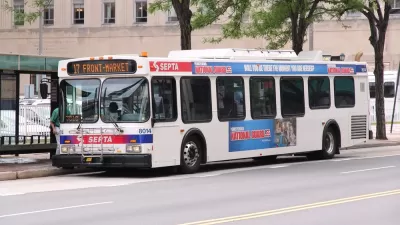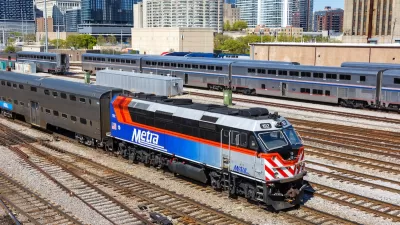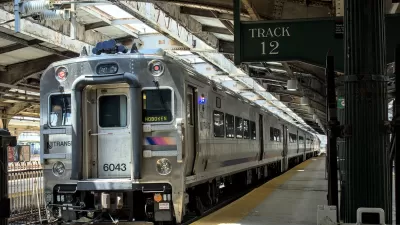A recent article tackles the counter-intuitive state of transit investment in the St. Louis region: “While the abundance of transit possibilities create a veneer of progress, the region is quietly in a public transit state of crisis.”
Scott Ogilvie examines the current morass preventing the St. Louis region’s political leadership from marshaling the resources to jump-start a new generation of transit service improvements—eight years after the MetroLink Blue Line opened.
As Ogilvie explains, demand for transit is high among the public. “Even MoDOT’s surveys show St. Louis area residents want transit expansion more than they want additional road capacity.”
But the public demand for traffic is not matched by the political will to deliver any of the many possible transit investments: “Years of regional leadership equivocating on transit priorities have left us with a long list of possibilities: the North/South MetroLink alignment, the Downtown Streetcar, Bus Rapid Transit, and the Loop Trolley. But which of theses projects most enhances the existing network? No one at the top of the political/transit heap has expressed a strong preference for any of them.”
Ogilvie suggests some possibilities for breaking the backlog, including the following: “Metro needs to be the lead agency on transit projects. The political liability of another false start is too high. St. Louis already has a fractured political landscape, the region can’t handle a jigsaw puzzle of transit agencies.” Other suggestions include prioritizing service improvements on routes with the most ridership.
FULL STORY: Critical Choices Ahead for St. Louis Transit

Trump Administration Could Effectively End Housing Voucher Program
Federal officials are eyeing major cuts to the Section 8 program that helps millions of low-income households pay rent.

Planetizen Federal Action Tracker
A weekly monitor of how Trump’s orders and actions are impacting planners and planning in America.

Ken Jennings Launches Transit Web Series
The Jeopardy champ wants you to ride public transit.

Rebuilding Smarter: How LA County Is Guiding Fire-Ravaged Communities Toward Resilience
Los Angeles County is leading a coordinated effort to help fire-impacted communities rebuild with resilience by providing recovery resources, promoting fire-wise design, and aligning reconstruction with broader sustainability and climate goals.

When Borders Blur: Regional Collaboration in Action
As regional challenges outgrow city boundaries, “When Borders Blur” explores how cross-jurisdictional collaboration can drive smarter, more resilient urban planning, sharing real-world lessons from thriving partnerships across North America.

Philadelphia Is Expanding its Network of Roundabouts
Roundabouts are widely shown to decrease traffic speed, reduce congestion, and improve efficiency.
Urban Design for Planners 1: Software Tools
This six-course series explores essential urban design concepts using open source software and equips planners with the tools they need to participate fully in the urban design process.
Planning for Universal Design
Learn the tools for implementing Universal Design in planning regulations.
Ada County Highway District
Clanton & Associates, Inc.
Jessamine County Fiscal Court
Institute for Housing and Urban Development Studies (IHS)
City of Grandview
Harvard GSD Executive Education
Toledo-Lucas County Plan Commissions
Salt Lake City
NYU Wagner Graduate School of Public Service





























